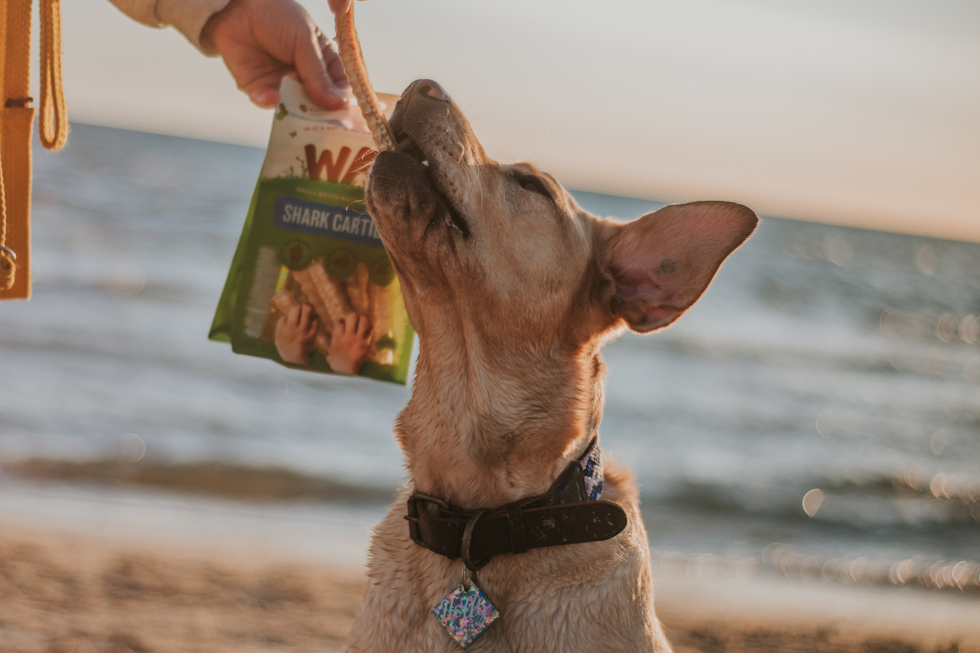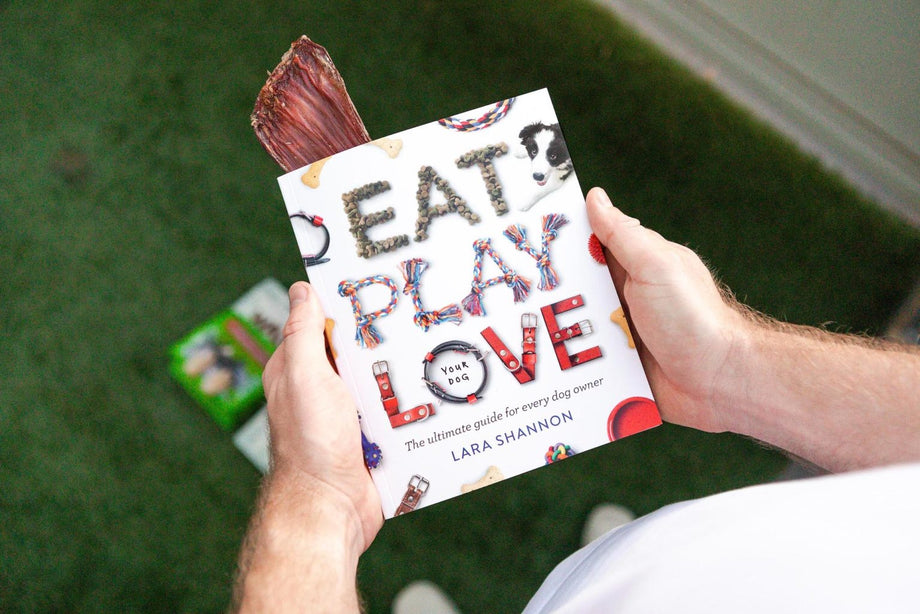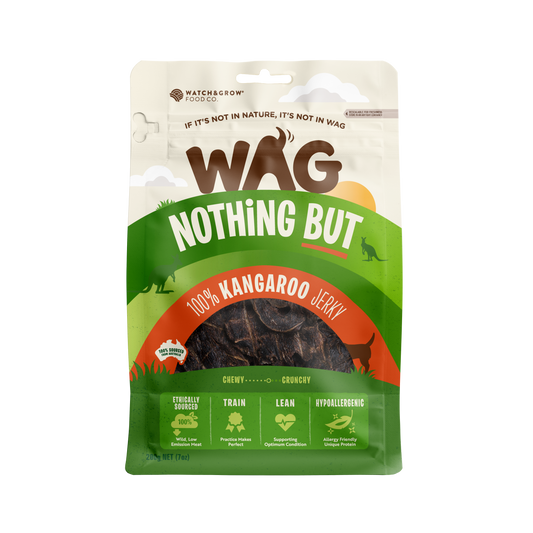This is an edited extract from Eat, Play, Love (your dog) by Lara Shannon.
Obedience training helps to build trust and mutual respect, offers mental and physical stimulation, helps your pet understand right and wrong, and, as pack animals, provides your dog with the leadership they need to help reduce stress and confusion in an uncertain world.
Basic commands all dogs should know include: sit, come, drop, leave it, stay, wait, stop, no and quiet. ‘Look at me’ is also very useful for bringing your dog’s focus back to you and it’s one I use on Darcy
These key commands help to keep your dog safe and make it easier for you to help keep him under control in public places or dangerous situations.
Helping address problems and behaviours
If your dog is well-trained with good manners, he will be more manageable, relaxed, content and confident. Most of the problem behaviours that dog trainers see are not because a dog intentionally sets out to do the wrong thing. The dogs are usually unsure, frightened, stressed or frustrated by different situations. If their leader (you) is not stepping up to the plate and taking control of a scary situation, they may feel they have no choice but to take matters into their own hands. This is where we see dogs acting out.

Obedience training also allows you to give your dog an alternative command such as ‘Sit’ or ‘On your mat’ to help prevent or control unwanted behaviours. For example, by teaching your dog to sit when you enter a room and rewarding this behaviour, this response is strengthened and is more likely to occur in the future. Likewise, you can use obedience training to prevent your dog from jumping up or barking when someone comes to the front door by having them go to their bed or sit and wait until they are given permission to say hello.
Obedience training helps you to provide clear and consistent boundaries for your dog. Dogs respond best to structure and routine.
Golden rules for obedience training
Timing is crucial
Dogs can only make a connection between a behaviour (their action) and a consequence (good or bad) if the consequence/reward is given at the time they are displaying that action or within a couple of seconds.
This is just one of the many reasons why you should never reprimand your dog when you get home for doing something such as toileting or digging during the day when you weren’t there. They will not understand why they are in trouble as the event has been long forgotten. Too often owners believe their dog is feeling guilt in these instances, when in fact your dog is simply reacting to your response and body language.
Training needs to be fun for both of you
If your dog is not into treats, then find out what else motivates them to do what you need them to do. This could be a ball, a game of tug, pats or praise. Every dog has something that will motivate them, it’s up to you to find out what this is and know that this can change as well. One day it might be treats, the next a toy. Just like us they can change their mind based on how they are feeling on the day.
Train in a calm, safe, distraction-free environment
Dogs can’t learn anything if they are anxious or stressed, so keep the distractions to a minimum, make sure they are in a space they feel comfortable in with no triggers around and use positive reinforcement to reward desired behaviour.
Be consistent
You always need to be clear with your command, concise (short, one-word cues) and consistent. This means you and everyone in the household has to use the same set of rules, give the same command for the same action and don’t set the dog up to fail by not being consistent with your commands or boundaries.
Use positive reinforcement
Dogs learn best through positive reinforcement, rewarding the behaviours we want from them at the time they are displaying them. If you yell at your dog, you can reinforce an unwanted behaviour without realising it. For example, if your dog jumps up on you because he wants your attention he is getting exactly that, even if you yell at them to ‘get down’ or push them down.
Focusing on positive reinforcement and rewarding your dog for desired behaviour is the way to go. If we use jumping for example, this would be ignoring them and turning your back on your dog when they are trying to jump up to get your attention or say hello, and the moment all four of their legs are back on the ground that is when you give them the attention, praise or a pat. Or if they have a reliable sit, walk in the door and before they have the chance to jump say ‘sit’ and reward that when they do. If you are consistent with this soon you will find your dog sitting and waiting in eager anticipation when you walk in the door.

Darcy was always running to the front door and jumping up on my legs whenever I entered the house until I taught him ‘on your bed’, which is in the lounge room and close to the front door. Often I can see him through the window running to the front door, then stopping in his tracks as he remembers what to do and racing back to his bed quivering in excitement for me to enter. Sometimes he still forgets in his excitement, so before he has managed to jump up on me I point or simply say ‘on your bed’ and off he bolts. I always reward that, but he gets extra high praise and a tummy rub when he has already placed himself there and is waiting for me to go to him without any cue, as that is the desired behaviour I really want.
How to condition a ‘reinforcer’
Using a verbal conditioned reinforcer such as ‘yes’ or ‘good dog’, or a training clicker helps you to ‘mark’ your dog’s correct behaviour and helps them understand exactly when they have done what you want. It’s all in the timing and you have to condition your dog to the reinforcer first. To do this you can use a treat, toy, game of tug, pat, or praise – whatever motivates them most – as a reward.
In the very early stages you don’t need them to be doing anything for the reward, you simply say the word ‘yes’ or press the clicker and immediately give them the reward. This must be within 0.5–1 second and no more than 3 seconds. Use a different voice or tone when you use a verbal reinforcer.
Practise this a few times every day until you are confident they understand that the sound equals a reward. It is important every time you say ‘yes’ or use the clicker, it is immediately followed by the reward while you are still in this teaching phase.
Start to use the clicker or say ‘yes’ when your dog is distracted, until they are reliably turning to look at you as soon as they hear it and come for their reward. Puppies can be conditioned to a reinforcer in just a few attempts, while some older dogs may take longer, so only move into the next phase when they are ready.
Once you have fully conditioned the reinforcer, you can use it to mark desired behaviour in a training scenario.
Phasing out continuous rewards
Move to an irregular pattern of reinforcement with the reward when your dog responds correctly 90% of the time. Only reward those attempts that are faster and more accurate to encourage them to do better. Some dogs are really motivated by training and/or the promise of a treat so will keep striving to outdo their last attempt, while others might need some verbal encouragement when they do it right, but only use their favourite reward for when they do really well.
Never stop rewarding completely – even the most well-behaved dog needs reminding that they’ll get a reward when they do what you ask or do particularly well. If you stop altogether they may lose interest, get confused and start to devalue the conditioned reinforcer.
When training multiple dogs
- You need to train one dog at a time.
- Don’t lock one dog in a separate room as they may bark and whine, causing a distraction.
- Leave one in the yard with a raw meaty bone (remember to read the safety section on bones) and train indoors with the other dog, then swap around.
- Ask a family member to take one dog for a walk while you train the other at home, then you take turns.
- Of course, the hide-and-seek game can be done with multiple dogs, as can the treasure hunt if your dogs definitely don’t have any food resource guarding issues.
This is an edited extract from Eat, Play, Love (your dog) by Lara Shannon, published by Hardie Grant Books ($29.99) and available where all good books are sold. You can purchase the book via Booktopia.
Shop the Recipe
WAG Team
Up Next
What are the best fish treats for my dog?






